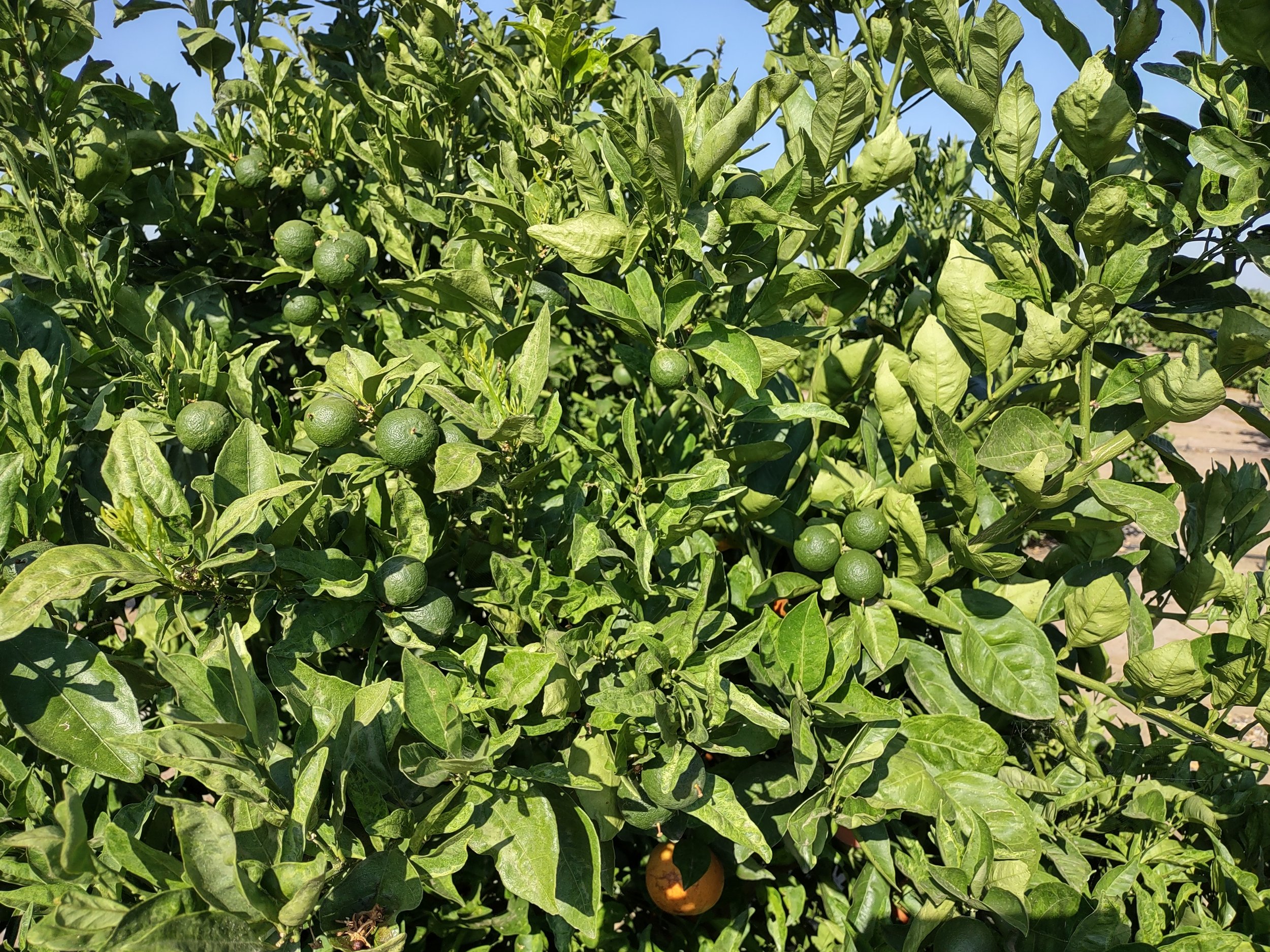
The History of Rosy Red
In 2009 a fieldman pointed out to me an odd-looking limb he found on one of my Olinda Valencia trees, and I kept an eye on it. The branch looked different from all the others on the tree. That’s when things started to get interesting.
I marked the tree and applied to the California Department of Food and Agriculture (CDFA) for the tree to be tested and registered with the State of California. The tree was approved for registration and was negative for CTV, and continued to be monitored by the CDFA for viruses. Over the next two years, I kept an eye on the unusual branch and eventually watched it produce a few fruits that were different from the rest of the tree. Each fruit had the same rosy blush rind and inside, a pinkish juicy flesh. The leaves on the branch were pointy and lighter colored than the rest of the tree.
2010
2012-2014
In 2012, I supplied some buds from the mutated limb to a nursery to try to grow some trees. Because the limb was so small, I wasn't sure if the buds would take, but they did! In fact, 16 daughter trees were grown with buds from the little limb. These 16 trees were multiplied at the nursery up to 400 new Rosy Red trees.
In 2014, these 400 trees were planted into the first experimental blocks of the Rosy Red. They looked pretty strange at first, but then they began to grow well.
2015
In 2015—seeing that the leaves and few fruits on these test trees were just like the mutation first observed on the mother limb—I sent budwood from the mother limb to the California Clonal Protection Program (CCPP) at the University of California Riverside. At CCPP, the budwood was tested for viruses, certified as clean, and processed for the release of clean budwood to licensed commercial nurseries. This process took three years.
2018
Fast forward through many other steps, in September 2018, I was awarded a plant patent for the Rosy Red Valencia. View the patent
2019
June 13, 2019 marks the first commercial planting of the Rosy Red anywhere on Earth. Additional acres were planted in 2020, 2022, 2023, and 2024. The original 10-acre commercial demonstration block is available to visit and see the tree and fruit characteristics. Send an email to arrange a visit with me, Nancy Lange.
2023
Signing up new growers to plant the Rosy Red was a big milestone. Six Central Valley growers planted in 2023, bringing the total tree count in the field to more than 20,000 trees. On top of that, we test harvested the Rosy Red in mid-July. Just four years after the original planting of 10 acres in June 2019 and April 2020, the commercial harvest yielded 33 tons of fruit, which was well received by wholesale brokers.
2024
More growers committed to plant the Rosy Red and 15,000 additional trees were planted. TreeSource Citrus Nursery has the exclusive contract to grow the Rosy Red Valencia in the State of California. The 2024 harvest was quickly and profitably sold and well received by brokers and buyers.
The 2025 harvest was our biggest ever—and well received by buyers! The word is getting out about the Rosy Red. New growers are scheduled to plant another 15,000 trees in 2025. The Rosy Red was served at the Vintage Press Buffet Breakfast at the resent CCM Citrus Showcase and was enjoyed by the attendees. The information table of the Rosy Red was busy with lots of questions and interest in this new variety.
More growers have already signed up with TreeSource Nursery to purchase and plant more Rosy Red trees. There are still trees available for 2026 on a first-come, first-served basis.










